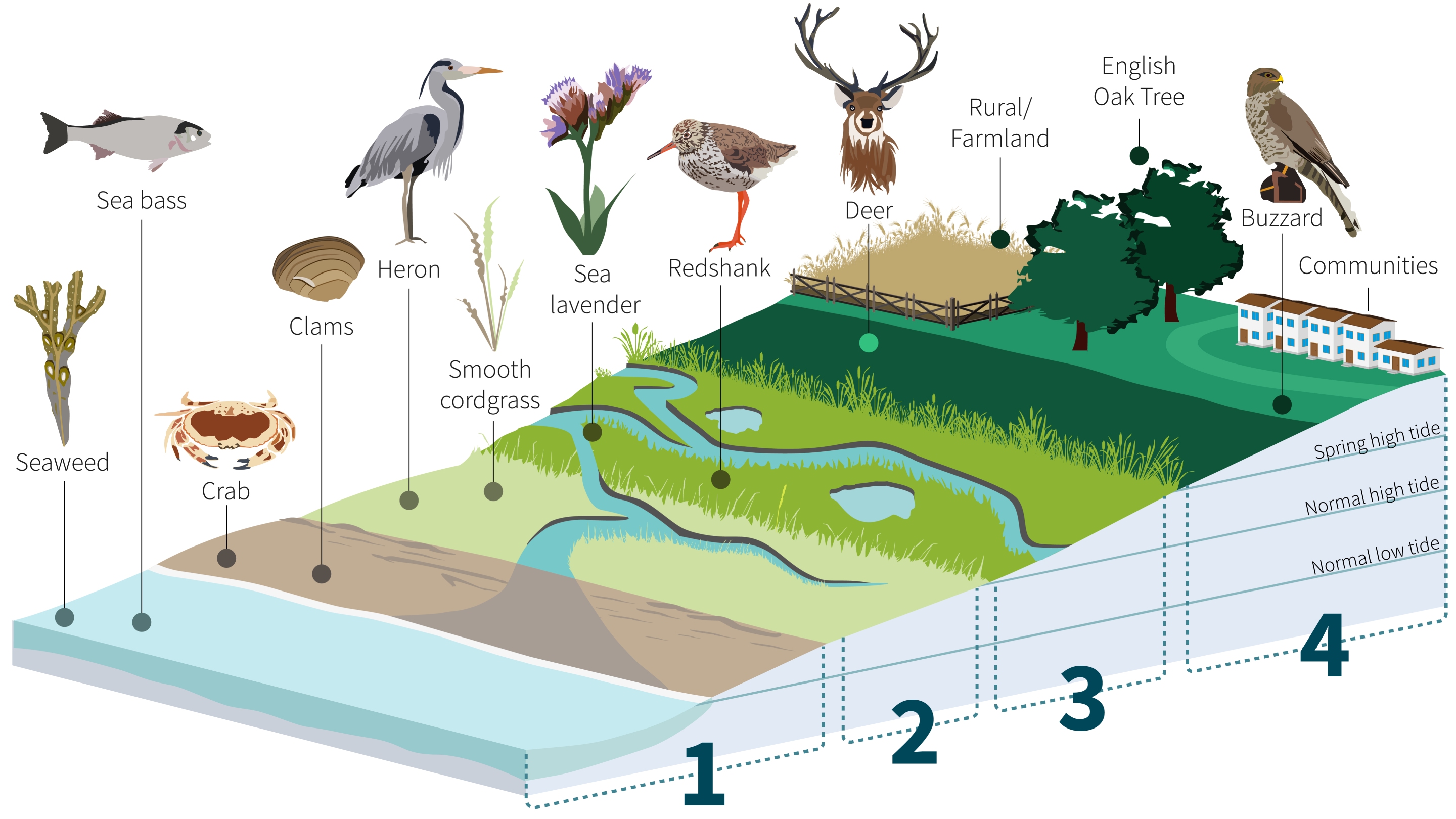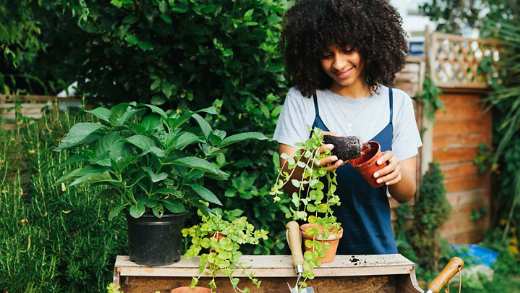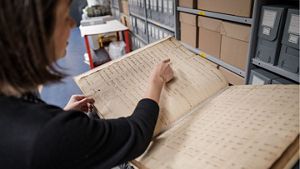
Aviva and WWF (World Wide Fund for Nature) today announce a new research project on the role UK saltmarsh habitats can play in fighting climate change and removing carbon emissions from the atmosphere. This new saltmarsh research platform will help scientists assess the carbon storage and sequestration potential of saltmarshes across the UK.
The project involves a carbon flux tower being installed on the Ribble Estuary, Lancashire. The flux tower will measure the full carbon cycle to validate the important role of saltmarsh as a long-term, natural store of carbon. It will also investigate the effect of rising sea-levels on saltmarsh habitats, helping to prioritise areas for restoration and conservation. By live monitoring levels of carbon cycling between the landscape and the atmosphere, this data, combined with traditional methods of analysing carbon stored in saltmarsh soils, will show how much carbon is captured, how quickly, and for how long it is stored. The project supports Aviva’s ambition to make the UK the most climate-ready large-economy by 2030.
The research - carried out in partnership with WWF, and in collaboration with the UK Centre for Ecology & Hydrology (UKCEH) and the Royal Society for the Protection of Birds (RSPB) - will be shared to better understand the carbon capture and storage capabilities of saltmarsh, contributing to establishing a UK Saltmarsh Code.
Native to the British Isles, saltmarshes have a significant role to play in fighting climate change by providing a long-term, natural store of carbon – known as ‘blue carbon’ when stored in coastal and marine ecosystems. Saltmarsh is also key in reversing nature loss and creating a rich and unique habitat for plants and animals specially adapted to the conditions. It is estimated that 85% of English saltmarsh has been lost in the last 200 years - primarily as a result of historic conversion to agricultural land1.
The structure of a saltmarsh:


1. Tidal / mudflat
The lowest part of the saltmarsh, an area that is rarely above water other than at low tide. Home to seaweeds, fish, crustaceans and shellfish.

2. Low marsh
Submerged frequently by the high tide. Home to wading birds, grasses, fish and shellfish.

3. Upper marsh
Only submerged during very high tides. Home to a wide variety of grasses and plants as well as nesting for migratory birds.

4. Inland
The border of the saltmarsh. Rarely submerged outside of storm conditions. Inland areas receive natural protection against coastal flooding from saltmarshes. Home to woodland, grasses, deer, birds of prey and communities.
Saltmarshes also provide natural protection from flooding and coastal erosion for nearby communities, with remaining saltmarshes estimated to provide over £1 billion1 in flood resilience benefits to UK homes. A 2019 report identified 22,000 hectares of land around the UK coast that could be restored to saltmarsh potentially capturing over 300,000 tonnes of carbon dioxide a year2.
Transcript for video Saltmarshes and combatting climate change
Saltmarshes are pivotal in combatting climate change.
1. Plants remove CO2 from the atmosphere through photosynthesis and store it as they grow. Saltmarshes can also trap organic matter from oceans and rivers.
2. As plants die naturally, they get buried under sediment, and decompose slowly.
3. As time passes, sediment accumulates, keeping the carbon in the ground.
Aviva and WWF are implementing a new Saltmarsh Research Platform.
The Research Platform includes the first carbon flux tower in a new network that will measure the role of saltmarsh in fighting climate change.
WWF and Aviva.
Acting on climate change to build a better tomorrow.
As the research continues, Aviva and WWF will support the identification of sites that can be restored to bring benefits to the climate, nature and our coastal communities. In doing so, we will help restore an ecosystem featuring iconic native species such as herons, egrets, otters and a variety of marine life including crabs, mussels, clams and various fish species as well as many migratory birds that breed in the UK.
Claudine Blamey, Aviva Group Sustainability Director, said: “We are delighted to work with WWF to fund research that will make a genuine contribution to the wider understanding of how saltmarsh can help us move towards net zero.
“Saltmarsh is a precious habitat that removes significant volumes of carbon from the atmosphere as well as being home to a wide range of native and migratory species. It also delivers flood mitigation benefits for the communities based nearby, worth over £70 million for England and Wales, protecting more than 90,000 properties and more than £2 billion of assets”3.
Tom Brook, Blue Carbon Technical Officer at WWF, said: “Aviva and WWF are working together to demonstrate how the business sector can take leadership in moving toward a low-carbon future. Our work will enable sustainable investment in saltmarsh as a nature-based solution to tackling the climate emergency, with added benefits to coastal defence, biodiversity, and water quality.”
“Through this climate research, Aviva are also making an important contribution to achieving societal Net Zero ambitions. This project represents a significant step in addressing critical knowledge gaps in saltmarsh management, ensuring that blue carbon action is underpinned by robust science and research, driving positive outcomes for climate, nature and people.”
-ENDS-
References
State of the environment: the coastal and marine environment. Environment Agency. Chief Scientist’s Group report released January 2023.
Saltmarsh Blue Carbon in UK and NW Europe - evidence synthesis for a UK Saltmarsh Carbon Code. Released March 2022.
Saltmarsh flood mitigation in England and Wales, natural capital: 2022. Released 15 July 2022.
Blue carbon is the term used for carbon captured by the world’s ocean and coastal ecosystems. For more information, see Protecting and effectively managing blue carbon ecosystems to realise the full value to society- a sea of opportunities, WWF. Released November 2020.
Enquiries
Philippa Terry
Financial Communications
-
Phone
-
+44 (0)7385 537 458
-
-
Email
Joe Booth
Financial Communications
-
Phone
-
+44 (0)7800 698 836
-
-
Email
About WWF and Aviva partnership
In 2021, WWF and Aviva have joined forces to call for a transformational shift in the UK financial sector to help slow climate change – a shift without which the UK will not be able to meet its net zero target. Together, WWF and Aviva are also working with communities in the UK and Canada to build more climate resilient ecosystems to help reduce the risk of climate-related natural disasters and create wider benefits for people. With this three-year partnership, Aviva is WWF’s lead partner in the insurance and pension sector. To find out more visit Aviva and WWF - Aviva plc.
About WWF
WWF (Worldwide Fund for Nature) is one of the world’s largest independent conservation organisations, active in nearly 100 countries. Our supporters – more than five million of them – are helping us to restore nature and to tackle the main causes of nature’s decline, particularly the food system and climate change. We’re fighting to ensure a world with thriving habitats and species, and to change hearts and minds so it becomes unacceptable to overuse our planet’s resources.
Notes to editors:
- We are the UK's leading diversified insurer and we operate in the UK, Ireland and Canada. We also have international investments in India and China.
- We help our 19.2 million (as at 31 December 2023) customers make the most out of life, plan for the future, and have the confidence that if things go wrong we’ll be there to put it right.
- We have been taking care of people for more than 325 years, in line with our purpose of being ‘with you today, for a better tomorrow’. In 2023, we paid £25.6 billion in claims and benefits to our customers.
- In 2021, we announced our ambition to become Net Zero by 2040, the first major insurance company in the world to do so. We are aiming to have Net Zero carbon emissions from Aviva’s operations and supply chain by 2030. While we are working towards our sustainability ambitions, we recognise that while we have control over Aviva’s operations and influence on our supply chain, when it comes to decarbonising the economy in which we operate and invest, Aviva is one part of a far larger global ecosystem. There are also limits to our ability to influence other organisations and governments. Nevertheless, we remain focused on the task and are committed to playing our part in the collective effort to enable the global transition. Find out more about our climate goals at www.aviva.com/climate-goals and our sustainability ambition and action at www.aviva.com/sustainability
- Aviva is a Living Wage, Living Pension and Living Hours employer and provides market-leading benefits for our people, including flexible working, paid carers leave and equal parental leave. Find out more at https://www.aviva.com/about-us/our-people/
- As at 31 December 2023, total Group assets under management at Aviva Group were £376 billion and our estimated Solvency II shareholder capital surplus was £8.8 billion. Our shares are listed on the London Stock Exchange and we are a member of the FTSE 100 index.
- For more details on what we do, our business and how we help our customers, visit www.aviva.com/about-us
- The Aviva newsroom at www.aviva.com/newsroom includes links to our spokespeople images, podcasts, research reports and our news release archive. Sign up to get the latest news from Aviva by email.
- You can follow us on:
- X: www.x.com/avivaplc
- LinkedIn: www.linkedin.com/company/aviva-plc
- Instagram: www.instagram.com/avivaplc
- For the latest corporate films from around our business, subscribe to our YouTube channel: www.youtube.com/user/aviva
















